 1995 Mitsubishi Carisma Hatchback Dimensions, Size & Specs
1995 Mitsubishi Carisma Hatchback Dimensions, Size & SpecsMeasurements of the 1995 Mitsubishi Carisma Hatchback, engineered for optimal performance and comfort
| Dimensions | |
|---|---|
| Length: | 4445-4475 mm175.0-176.2 in14.6-14.7 ft |
| Width: | 1710 mm67.3 in5.6 ft |
| Height: | 1405 mm55.3 in4.6 ft |
| Trunk Capacity: | 430-440 liter15.2-15.5 cu ft |
| Trunk Capacity (Max): | 660-1150 liter23.3-40.6 cu ft |
| Weight Specifications | |
| Curb Weight: | 1105-1285 kg2436-2833 lbs |
| Maximal permitted Weight: | 1630-1795 kg3594-3957 lbs |
| Tire Specifications | |
| Rims Sizes: | 14-inch rims:
|
| Tire Sizes: |
|
The Mitsubishi Carisma Hatchback was produced between 1995 and 2003, offering a practical and compact hatchback option for drivers seeking a balance between space and maneuverability. Its length ranges from 4445 mm to 4475 mm (approximately 175 to 176.2 inches), making it slightly larger than many compact cars of its era. With a consistent width of 1710 mm (67.3 inches) and a height of 1405 mm (55.3 inches), the Carisma Hatchback fits comfortably into the compact car segment while providing ample interior space.
Weight-wise, the vehicle's curb weight varies from 1105 kg to 1285 kg (2436 to 2834 lbs), depending on the specific model and equipment. The maximum weight range is between 1630 kg and 1795 kg (3594 to 3954 lbs), which reflects its capacity to handle passengers and cargo safely. This hatchback offers a versatile luggage capacity from 430 to 440 liters (15.2 to 15.5 cubic feet) with the rear seats up, increasing substantially to between 660 and 1150 liters (23.3 to 40.6 cubic feet) when the rear seats are folded down. This makes it suitable for both daily commuting and longer trips requiring extra cargo space.
The Mitsubishi Carisma Hatchback supports rims in sizes 14 inches and 15 inches, specifically 5.5J x 15 ET 44-46 and 6J x 15 ET 44-46, complemented by a variety of tire sizes including 185/65 R14, 195/60 R15, 195/60 R14, and 175/65 R14. This variety allows owners to tailor their vehicle's performance and aesthetics to their preferences.
Overall, the Mitsubishi Carisma Hatchback of the late 1990s and early 2000s represents a compact car with well-rounded dimensions, competitive luggage capacity, and adaptable wheel options, making it a practical choice for small families or individuals seeking a reliable hatchback with sufficient interior and cargo space.
Discover the standout features that make the 1995 Mitsubishi Carisma Hatchback a leader in its class
Have a question? Please check our knowledgebase first.
The Mitsubishi Carisma Hatchback produced between 1995 and 2003 has an overall length ranging from 4445 mm to 4475 mm (approximately 175.0 to 176.2 inches). It has a width of 1710 mm (around 67.3 inches) and a height of 1405 mm (approximately 55.3 inches). These dimensions position the Carisma firmly within the compact hatchback category, offering a balanced size that is manageable for urban driving without sacrificing interior space.
The curb weight of the Mitsubishi Carisma Hatchback ranges from 1105 kg to 1285 kg (about 2436 to 2833 pounds), while its maximum gross weight varies between 1630 kg and 1795 kg (approximately 3594 to 3956 pounds). The relatively lightweight structure helps the Carisma maintain nimble handling and acceptable fuel economy. Moreover, the manageable weight contributes to responsive braking and cornering capabilities, which enhances driver confidence, especially in city and highway conditions.
The Mitsubishi Carisma Hatchback offers a luggage capacity between 430 liters and 440 liters (15.2 to 15.5 cubic feet) with the rear seats in their upright position, providing sufficient space for everyday shopping or small family trips. When the rear seats are folded down, the cargo space significantly increases to between 660 liters and 1150 liters (23.3 to 40.6 cubic feet), making it versatile enough to accommodate larger items or bulky luggage, ideal for longer journeys or transporting sports equipment.
The Mitsubishi Carisma Hatchback supports several rim sizes, including 14 inches and 15 inches with widths ranging from 5.5J to 6J, and offset values (ET) between 44 and 46. Tire sizes compatible with these rims include 185/65 R14, 195/60 R15, 195/60 R14, and 175/65 R14. These tire sizes contribute to a balanced ride quality and good road grip, enhancing the car's overall driving dynamics and safety.
Yes, the Mitsubishi Carisma Hatchback fits comfortably into a standard residential garage. With a maximum length of 4475 mm (176.2 inches), width of 1710 mm (67.3 inches), and height of 1405 mm (55.3 inches), it falls well within typical garage dimensions, which usually accommodate vehicles up to around 5 meters (196.9 inches) in length and 2.5 meters (98.4 inches) in width. This makes it highly practical for daily users who need secure parking space at home.
The Mitsubishi Carisma Hatchback, introduced in 1995, featured a generally larger and more modern body compared to earlier Mitsubishi hatchbacks like the Colt. It represented a move toward a more mature design with increased dimensions, particularly in length and interior space. While previous models were smaller and often more compact, the Carisma offered enhanced interior comfort and better luggage capacity, making it a more practical choice for small families or daily commuters looking for more room and versatility.
When compared to contemporaries such as the Volkswagen Golf Mk4, Ford Focus first generation, and Opel Astra G, the Mitsubishi Carisma Hatchback is very much in the same compact hatchback segment. Its length of around 4445 to 4475 mm is competitive, although some rivals like the Ford Focus are marginally shorter. Its width and height are also typical for the segment. Luggage capacity is comparable or slightly better in certain configurations, especially with the rear seats folded, giving it a practical edge in cargo space versus some rivals. Overall, the Carisma offered an attractive package of size and utility typical for its class.
The compact dimensions and moderate curb weight (1105–1285 kg) of the Mitsubishi Carisma Hatchback contribute positively to fuel efficiency and driving experience. A smaller, lighter vehicle typically consumes less fuel, especially in urban stop-and-go traffic, and is easier to maneuver and park. The Carisma's size strikes a balance between passenger comfort and nimble handling, resulting in a car that is responsive on city streets yet stable at highway speeds. Its size also helps reduce wind resistance moderately, aiding fuel economy further.
Despite its compact exterior size, the Mitsubishi Carisma Hatchback is thoughtfully designed to maximize interior space and passenger comfort. The footprint of approximately 4.45 meters in length and 1.71 meters in width allows for a spacious cabin relative to many competitors of its era. The hatchback design enhances rear headroom and cargo accessibility, while the relatively low height of 1.405 meters contributes to a sleek profile without overly compromising interior vertical space. This results in comfortable seating for four to five passengers with ample legroom and luggage space for everyday needs.
The Mitsubishi Carisma Hatchback was notable for blending Japanese engineering with European styling and production standards, as it was built in the Netherlands. It featured a modern, aerodynamic design with clean lines and practical hatchback versatility. Its build quality and reliability were often highlighted, supported by a range of efficient petrol and diesel engines. Additionally, it offered competitive luggage space and a comfortable ride, combining practicality with a solid driving experience. This generation also benefited from a reputation for durability and good value, making it a respected choice in the compact hatchback market of its time.
Discover similar sized cars.
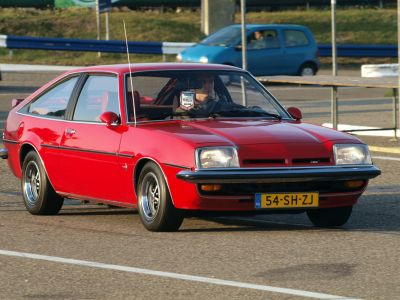
| Production: | 1977-1983 |
|---|---|
| Model Year: | 1978 |
| Length: | 4376 mm172.3 in |
| Width: | 1670 mm65.7 in |
| Height: | 1340 mm52.8 in |
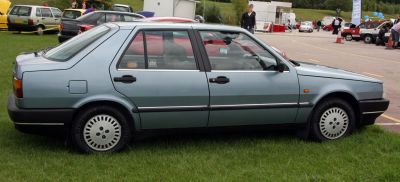
| Production: | 1985-1996 |
|---|---|
| Model Year: | 1986 |
| Length: | 4520 mm178.0 in |
| Width: | 1760 mm69.3 in |
| Height: | 1435 mm56.5 in |
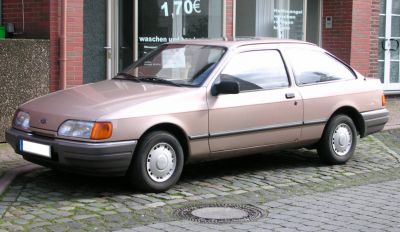
| Production: | 1987-1993 |
|---|---|
| Model Year: | 1987 |
| Length: | 4425 mm174.2 in |
| Width: | 1694 mm66.7 in |
| Height: | 1407 mm55.4 in |

| Production: | 1982-1989 |
|---|---|
| Model Year: | 1983 |
| Length: | 4425 mm174.2 in |
| Width: | 1694 mm66.7 in |
| Height: | 1407 mm55.4 in |
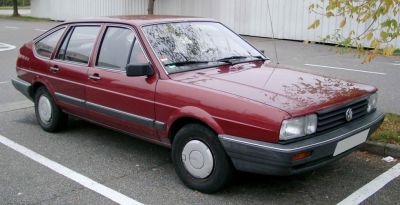
| Production: | 1985-1988 |
|---|---|
| Model Year: | 1985 |
| Length: | 4425 mm174.2 in |
| Width: | 1710 mm67.3 in |
| Height: | 1385 mm54.5 in |
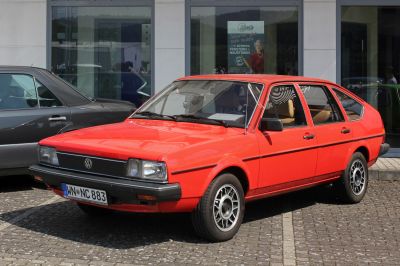
| Production: | 1980-1988 |
|---|---|
| Model Year: | 1981 |
| Length: | 4435 mm174.6 in |
| Width: | 1685 mm66.3 in |
| Height: | 1385 mm54.5 in |
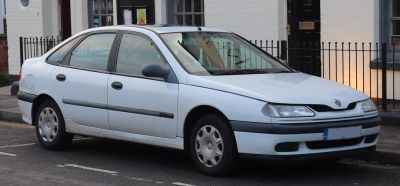
| Production: | 1993-2002 |
|---|---|
| Model Year: | 1994 |
| Length: | 4510 mm177.6 in |
| Width: | 1752 mm69.0 in |
| Height: | 1430-1442 mm56.3-56.8 in |
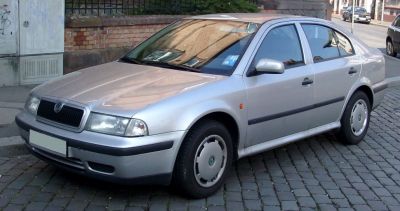
| Production: | 1996-2000 |
|---|---|
| Model Year: | 1996 |
| Length: | 4511 mm177.6 in |
| Width: | 1731 mm68.1 in |
| Height: | 1429-1730 mm56.3-68.1 in |
